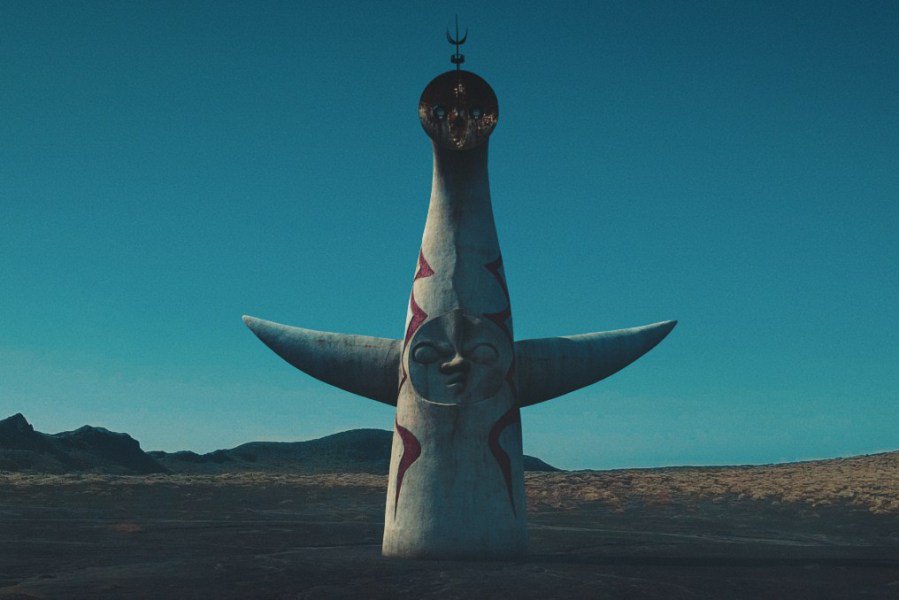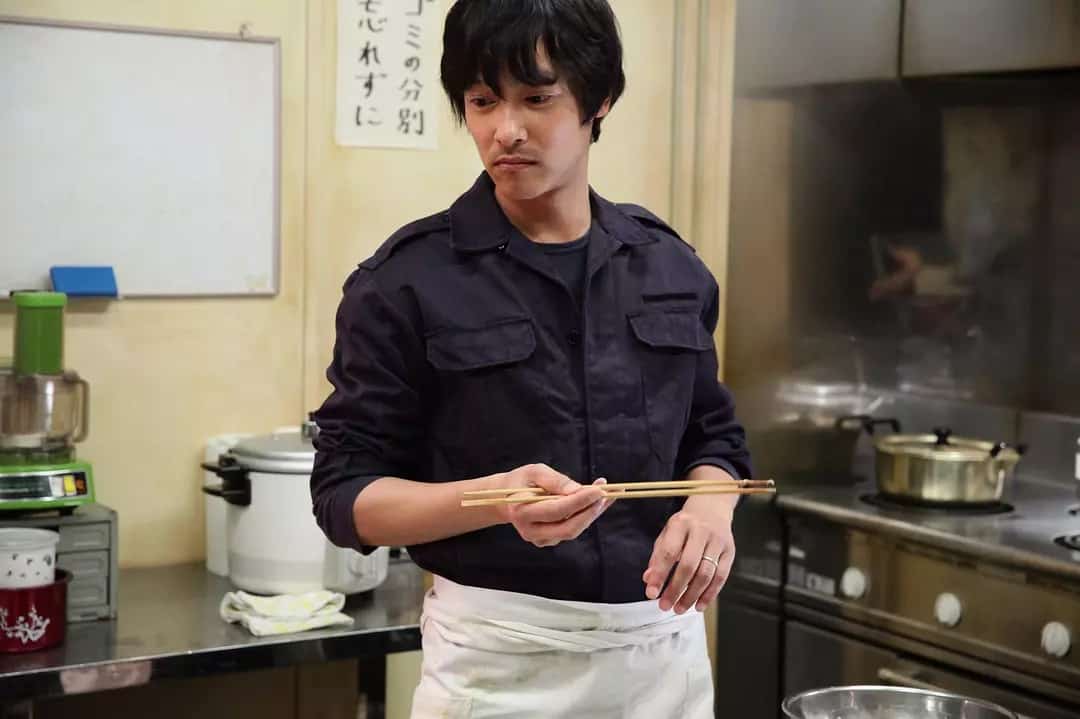My first experience of Taro Okamoto's artwork the ‘Tower of the Sun' was on 5th March 2011, when I travelled to the Expo '70 Stadium in Suita, Osaka to watch Gamba Osaka take on Cerezo Osaka. Travelling on the monorail to the stadium, a clear view of the piece can be had from the window, lurking mysteriously. But other than a strange monument, obviously part of the 1970 Expo held in the city, I thought little of it. Kosai Sekine's documentary debut named after Okamoto's work lets it be known that the Tower of the Sun is much, much more.
“Tower of the Sun” screened at Camera Japan 2019

Through a series of talking heads interviews with various artists, art critics and academics from various disciplines, Sekine tells the story of the artwork, from its commission to Okamoto's intentions behind its design, before looking at how it is a symbol of much more than what appears and serves as a reflection of the true Japan.
The time of the Expo was at the height of the Cold War, with technological advances coming at a rapid rate, notably the space race; a further battle of the ongoing conflict. The theme of the Expo was to be ‘harmony and progress' and Okamoto was commissioned to design its centre piece. But as an avant-garde artist, this was a risky decision for both sides: Okamoto paid by those he opposed; while the organisers were likely to have a trouble-maker on their hands. However, Okamoto seized the opportunity to be truly ironic in what he produced.

On face value, the Tower shows the evolution of life on the planet, with the inside consisting of various levels showing the progress of life, culminating in humans at the top looking to the technologically-advanced future. It shot through the top of Kenzo Tange's ‘Big Roof', showing the progress of man knowing no limits. But Okamoto's true intended meaning was much more damning on just how much humanity has progressed: if the Big Roof was a symbol of the progress into the modern world of Japan at the time, Tower of the Sun broke this idea and went beyond.
Okamoto went against everything the Expo stood for, believing harmony only exists when you have opposing forces: he was the balance to the seemingly exponential human progress the Expo wished to convey. The Tower also showed ordinary people living their ordinary lives, far from the supposed progression. Having studied abroad in France, he returned to Japan seemingly unaware of what Japan was. He travelled to Tohoku and Okinawa in the hope of finding more indigenous cultures, removed from the more formal Yayoi that came from China, civilising Japan. Okamoto wanted to unearth the Jomon period, and thus return to true Japanese roots.
For Okamoto, the traditional culture had been castrated and Japan was now living in ‘voluntary servitude', particularly since the end of World War II. Rigid structures have seen humanity no longer want for anything, as rapid economic growth now provides everything for us. Is the space race a true sign of the progress of humanity?!
Nuclear power was also a concern for Okamoto, with Japan a nation obviously in fear of what nuclear power can do, yet nuclear power stations were being built in the country. Sekine then brings us to the present and the aftermath of the earthquake on 11th March 2011. Large walls now being built along the coast to protect against tsunami, but they will protect against nothing. These contradictions are what Okamoto wanted to highlight with Tower of the Sun, saying what most people are afraid to say.

As you may have gathered, Sekine's documentary is as much a lecture as a film. Much of the 112 minute running time is talking heads interviews with various people from different perspectives interpreting the work. There is archive footage, but this is used sparingly. The second half, looking at the current day, shows more of the devastation of the tsunami of 2011 and the resulting landscape, as well as a performance artist ‘reacting' to his other work ‘Myth of Tomorrow'; a companion piece to the Tower. There are also shots of a seeming Jomon girl with the Tower, though the more emotive nature of these are a little jarring against the more academic discussion. The most interesting breaks from the interviews are performances of the more traditional culture that Okamoto observed.
But what Sekine creates is a very absorbing watch, despite this slightly extended lecture feel. The breaking-up into various chapters with clear switches in the story maintains interest throughout. We start with Okamoto's influences, notably his parents raising him to be an individual and his time spent in Paris, before moving into what his intentions for the Expo were. How Okamoto took theory learned while in Paris and used this to try and explore Japan are looked into, showing the Tower to have a meaning far beyond the Expo itself; more a critique of life as a whole. There are enough different perspectives throughout to provide enough food for thought, not getting bogged down too much in one of two ideas. Jemapur's soundtrack also provides a nice backdrop to the clips shown, blending the old with the new.
When Okamoto was commissioned to design for the Expo, the organisers perhaps didn't fully know what they were letting themselves in for, and perhaps never did. The Expo was simply an example for Okamoto to express his ideas about humanity as a whole, ironically showing that humans have far from progressed in the modern world. Now, nearly fifty years on from its original conception, the meaning of the Tower has changed with the times, and goes way beyond simply being a strange monument as part of the Expo. With a career largely of music videos, advertising and shorts so far, Sekine has created a documentary that goes beyond just being about its titular subject, with a study of Japan and humanity as a whole, where bright lights and electronics are far from symbols of human progress. Documentary is perhaps the direction in which Sekine's career should grow.















